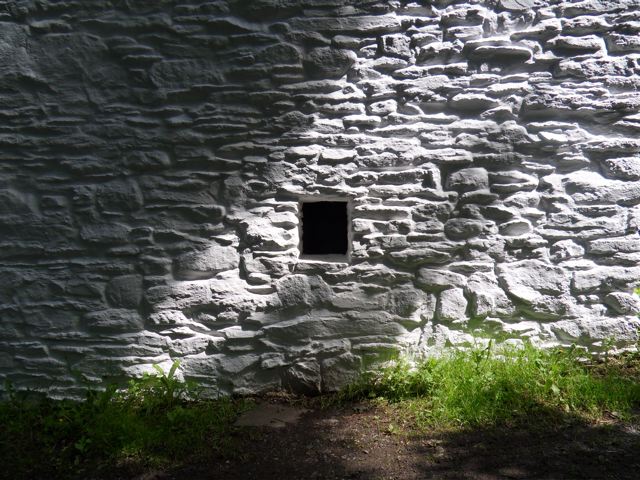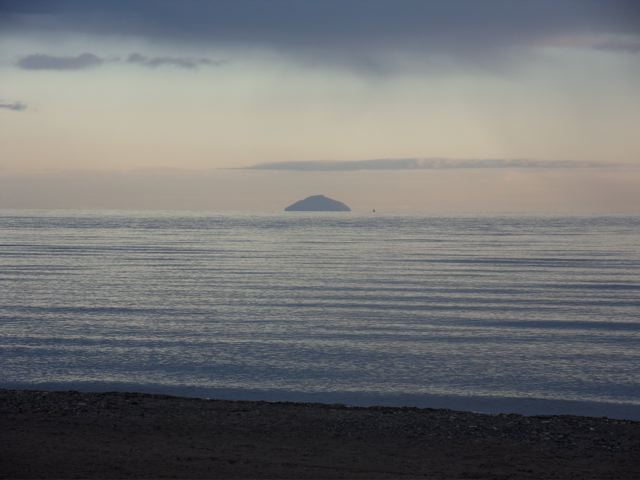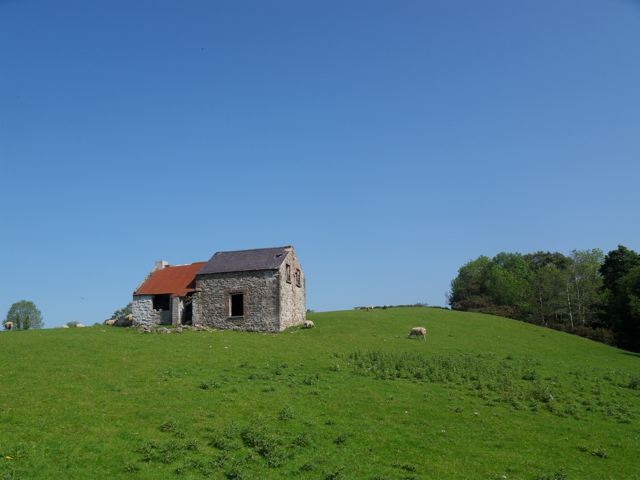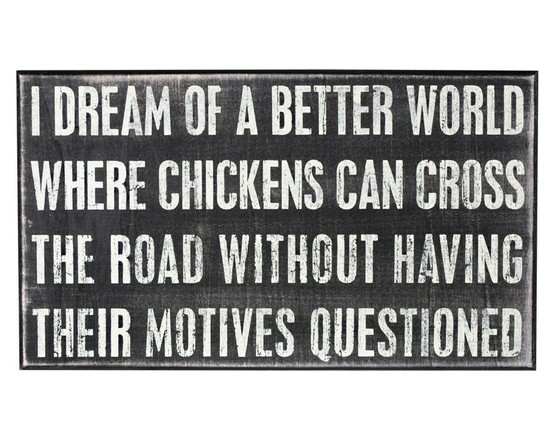Comber Potatoes are soon to be a local product with 'PGI' (Protected Geographical Indicator) status, much like Champagne wine, Parma ham etc. This report from the Belfast Telegraph almost exactly one year ago gives a fascinating definition:
"...Only potatoes grown in the former Hamilton and Montgomery lands would pass muster — that is Ards Borough Council as far south as Ardkeen on the Ards peninsula and Crossgar and Killyleagh on the western side of Strangford, North Down Borough Council and the parts of Castlereagh, Belfast and Down District Councils that lie to the east of the A7 road between Carryduff and Killyleagh..."
This is a direct quote from the official DEFRA document (PDF here). The document goes on to quote from The Montgomery Manuscripts. And Ayrshire, where Hamilton & Montgomery came from, is of course also famous for potatoes - so it may well have been the early Scots who brought spuds to Comber.
There's an alternative story though, which is that some of the English colonists who came to the Ards with Sir Thomas Smith in 1572-1575 were farmers, and after Smith's 'official' colony collapsed they remained to farm the flat fertile land near Comber. When Sir Walter Raleigh brought the potato from the Americas to Europe (and specifically to Ireland) in the late 1580s, some of the seed crop were brought to the Comber area and were planted there by these English tenants. So maybe the Comber spud is Ulster-English in origin rather than Ulster-Scots.
Comber spuds are in season just now, but if you're driving along the M1 near Moira / Lisburn, keep an eye out for this poster I've just designed for one of my clients, local potato producer Wilson's Country, in a roadside field where they are currently growing a fresh crop. It's had quite a reaction from passing motorists!
(explanation for readers not from Ulster - 'peelers' is a nickname for 'police')
Wednesday, June 29, 2011
The story of Comber Potatoes
Posted by Mark Thompson at Wednesday, June 29, 2011 0 comments
Labels: Ards Peninsula, Hamilton + Montgomery
Tuesday, June 28, 2011
The No. 7 Modern Mistress solid fuel stove, Drumnahunshin Farm, Ulster Folk Museum
This is the older model, with the hot water tap at the side, exactly as my Granny Wilson had in her wee house at Ballyfrenis. Took this photo today. Click to enlarge.
Saturday, June 18, 2011
The Dying Words of David Dickson of Irvine (1583-1663)
(A brief post as there are other things to attend to just now). I can't thank Billy enough for sending this to me earlier in the week. Last weekend he gave me a tour of a number of important historical sites associated with Dickson. Then this appeared in my inbox on Wednesday.
'...on his death-bed in Edinburgh on December 1662, a friend asked him how he was himself. His reply was 'I have taken all my good deeds, and all my bad deeds, and have cast them together in a heap before the Lord, and have fled from both to Jesus Christ, and in Him I have sweet peace...'
> Wikipedia entry on David Dickson here.
Thursday, June 16, 2011
'A Mapp Shewing The Order & Causes of Salvation & Damnation' by John Bunyan
John Bunyan (1628 - 1688) is best known as the author of Pilgrim's Progress and other books like The Holy War. Here's his Wikipedia biography. He also seems to have been a bit of a graphic designer to, as the image below shows, the first version of which was created by Bunyan in 1644.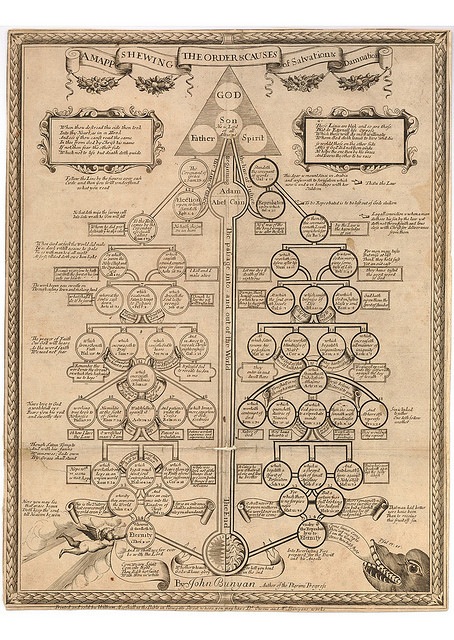
You can see a larger PDF version here. It is said to have been based on the earlier works of William Perkins (1558-1602), called 'A Golden Chain' (see example here). Even though the age we live in is highly visual, diagrams like these can look a bit strange and esoteric to us. (Main image above from this Flickr page)
Monday, June 13, 2011
The Ulster Covenant in Ayrshire
Yesterday when driving from Ayr through Troon up to Irvine, I made a point of stopping at Titchfield Road along Troon seafront. Why? Because my great grandfather was living there when he signed the Ulster Covenant in Troon in 1912. If you click on the document below (from the excellent PRONI website) you'll see five Thompson men - John, James, William, William and William John - were all staying at Titchfield Row when they signed the Covenant. William John was my great grandfather, and he gave his home address as Ballyfrench - the wee townland I'm now back living on again. You'll see that there were Bailies from John St in Newtownards living there with them, as well as other Ards and Belfast men. I expect they were over there working on the 'Scotch Harvest'. (Click to enlarge):
The photo below is of the roadsign for Titchfield Road, with Ailsa Craig directly behind. I wonder how often these men stood on that shore after a hard days work, looked out across the sea and thought of home? (Click to enlarge):
Ayrshire is my favourite part of Scotland - family tradition has it that the first of our Thompsons came across to Ulster from around Troon and Kilmarnock, probably some time in the early 1700s. Thanks to Joe and Jean, to Billy, to William, John and Brian for all of their help and hospitality over the weekend. If Stena Line and P&O would pool their finances and build a massive big bridge I'd probably be over there at least once a month - trawling through graveyards, libraries, museums, bookshops, ruined castles and abbeys... and eating Ayrshire tatties!
A fine year
...from the Royal Mile in Edinburgh, on the wall beside the John Knox House (now part of the Scottish Storytelling Centre).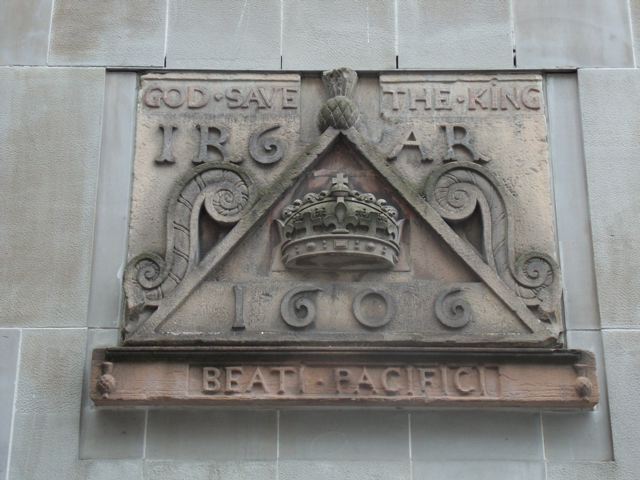
Saturday, June 11, 2011
Friday, June 10, 2011
Mingary Castle, Ardnamurchan, 6am this morning
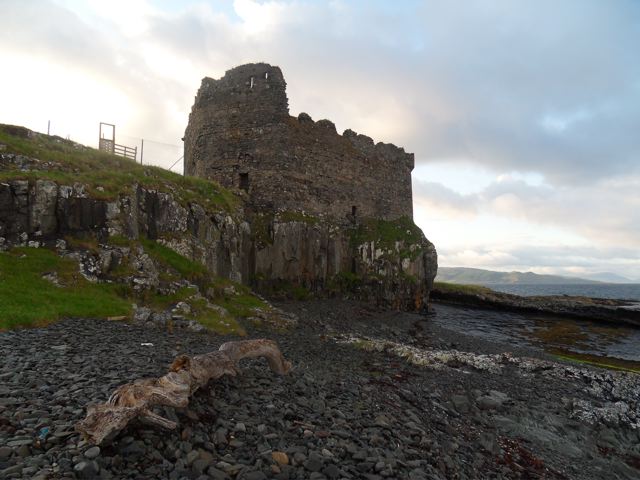
Mingary is the most remote place I've ever been to. 27 miles of single track road from Corran Ferry to Kilchoan. A perfect location for a prison even today, although the story I'm interested in took place here in 1644. If help is coming, it's not coming by land - it'll have to be by sea.
More on this to follow...
Thursday, June 09, 2011
Lowland Scots, Ulster Scots, Scotch-Irish
'...The Lowland Scots, the Ulster Scots, and the Scotch-Irish of America are, as has been noted, one and the same race, but the two latter branches of the race have had experiences in Ulster and America which have strengthened their character and toughened their native fibre by the very difficulties they have been compelled to overcome... the Ulster Scot in his new environment ceased to be a Lowlander, though the seedbed of his race was the Lowlands of Scotland... he will make one more migration - this time to the New World, where freedom abounds and opportunity beckons. Here, amid new surroundings, he will undergo a further change, and here he will go his farthest lengths and attain his greatest heights. No longer a Lowland Scot or and Ulster Scot, he becomes the Scotch-Irishman of America - still of the same race as the Lowlander and the Ulster Scot, to be sure, but different from either by reason of his adjustment to a changed environment...'
from The Scotch-Irish of Colonial Pennsylvania by Wayland F Dunaway (University of North Carolina Press, 1944) p 26-27
Visit Ulster, Pennsylvania here.
Tuesday, June 07, 2011
John Dunlap plaque, Strabane
Sadly this plaque to John Dunlap, the Printer of the American Declaration of Independence, hasn't been maintained just as well as the James Buchanan one I posted the other day. This one is on a concrete plinth, sited on a narrow strip of grass, along the road heading out of Strabane towards Plumbridge (and towards the beautiful President Woodrow Wilson ancestral cottage at Dergalt, which has just been refurbished). There seems to be a series of similar blue plaques dotted across Northern Ireland, made from a ceramic enamel material, and presumably all installed around the same time (maybe 20 - 30 years ago?). More on blue plaques to follow next week...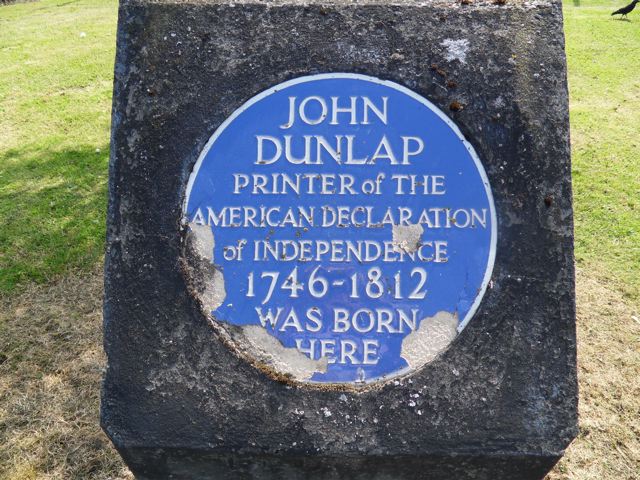
Monday, June 06, 2011
Just for badness...
... a few weeks ago while in Belfast in between a number of client meetings I went (with a colleague) to a place for lunch which had one of those serve-over counters where you tell the person behind the counter what you want him/her to put on your plate. So, just for badness, when she asked 'what would you like sir", I said "A'll hae a wheen o' prootas". You can imagine the bewilderment.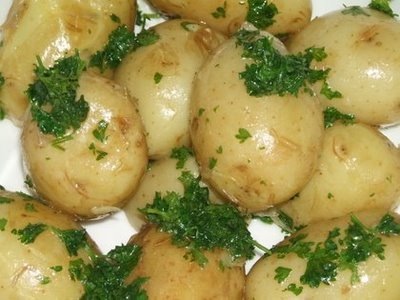
Sunday, June 05, 2011
'Death Has Lost its Sting' - Psalm 3 via Isaac Watts (1719) to Sojourn Church, Kentucky (2011)
My God, how many are my fears
How fast my foes increase
Conspiring my eternal death
They break my fleeting peace
The lying tempter would persuade
My heart to doubt Your aid
And all my swelling sins appear
Much greater than Your grace
Chorus:
Arise, Oh Lord, fulfill your grace
While I Your glory sing;
My God has broke the serpentʼs teeth
And death has lost his sting
But You - my Glory and my Strength -
Will on my tempter tread
Will silence all my threatening guilt
And raise my drooping head.
Bridge:
And though the hosts of death and hell
All armed against me stand
No more will terrors shake my soul;
Secure within Your hand.
Here's an article about the history of the song, and the new version in the video above. And here is Watts' original, from his Psalms of David first published in 1719.
Friday, June 03, 2011
President James Buchanan plaque, Deroran, County Tyrone
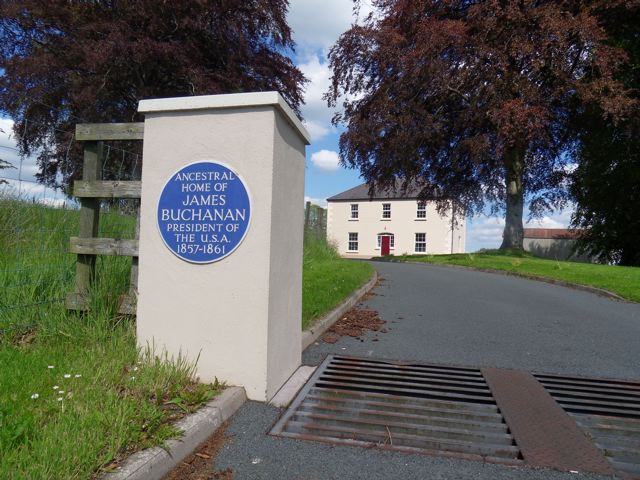
I had to do a bit of driving today to see a few clients, so I put the camera in the car and in between meetings I tracked down a few cultural photo opportunities. Finding the site of the Buchanan plaque was tricky enough, but eventually I got it. It's just under three miles east of Omagh, along the Deverney Road (or if you're driving from Sixmilecross, it's along the Bencran Road). Easily visible just on the road side, the house looks like a private farm rather than a visitor centre, so I didn't bother harassing the residents by knocking on their door.
Sixmilecross is where the minister/poet/author W.F. Marshall was from (his house is still there, with an Ulster History Circle blue plaque on the gate post as well as one on the house itself). The area includes a 'Marshall Country Trail' with brown signs along the route (click here for an example of one). Last year the Ulster-Scots Community Network, working alongside the Marshall family, published a booklet about Marshall's life. It was launched in City Hall and WF's granddaughter spoke at the event. I wonder if he was aware of the old Buchanan homestead just a few miles from his own house, and if that was one of his inspirations for his 1943 classic Ulster Sails West? After all, Marshall was born in Omagh and his father was the principal of Sixmilecross School, so the family would have travelled the Deverney Road / Bencran Road, past the old Buchanan homestead, every day.
Clearly Marshall is important to the people of that part of County Tyrone; in fact it has been said that Marshall 'virtually single-handledly... created a culture and heritage for the Ulsterman of which he could be proud'. With a brown-signed 'trail' in place there is a great opportunity to renew a wider interest in the man and his writings, and to enjoy the landscape he lived and worked in.
No matter which county, and whether east or west of the River Bann, rural Ulster is the place to be. 

